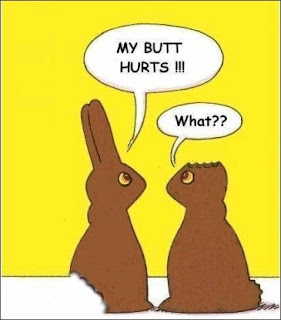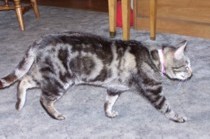Quotation Saturday, on Sunday: Mothers

Every Saturday: Quotations to feed your soul.
Mamacita says: This Sunday will be, appropriately enough, a day filled with mothers. Mine, my sisters, my niece, grandmothers, aunts, daughters, cousins, me. . . . all mothers, and several of them more than one KIND of mother. (no, not THAT kind of mother. Perhaps you were thinking of YOUR family?) Many mothers.
Once upon a time, we were just sisters and wives and daughters when we got together, sharing a mom and having first names. Now, we’re all Mom, Mommy, Grandma, Mamaw, Aunt, Great-aunt, mother-in-law . . . . I can remember days when I couldn’t remember the last time someone called me by my actual name.
I also remember, clear as a bell, the first time my child said my new name. Mama. That moment is etched on my heart, in beautiful calligraphy, and decorated with fresh flowers. I still love to hear my children say “Mom.” These women whose children refer to them by their first names, instead of some variation of mother? I pity both woman and child. Somethin’ WRONG wit dat. Somebody gots her priorities all messed up.
Naturally, this doesn’t keep me from snickering at women who choose a synonym for “grandmother” that sounds like poo or a body part or an aging porn star nickname.

Contrary to popular belief, mothers are not omniscient; we don’t have eyes in the backs of our heads, and we can’t read your mind. The only exception to that would be MY mother.
And speaking of my mother. . . Mom, I have tried to emulate you in many ways, all of my life. You read to us. You sat down on the floor and played with us. You used the power of Parenthood and created Special Days, all throughout the year. Christmas is a holiday, sure, but it was YOU who created OUR Christmas. I have tried to “do” holidays just as you did, all my married life.

This is MY mother. She’s still beautiful.
I’m looking forward to Sunday, dear sisters and nieces and daughters and all of the other wonderful descriptions that come with all of you. I might be the weirdo of the bunch – oh, it’s not like I don’t KNOW that!!!! -but I might also be the most sentimental of the bunch.
1.The phrase “working mother” is redundant. ~Jane Sellman
2. The moment a child is born, the mother is also born. She never existed before. The woman existed, but the mother, never. A mother is something absolutely new. ~Rajneesh
3. I remember my mother’s prayers and they have always followed me. They have clung to me all my life. ~Abraham Lincoln

Nancy Hanks, Abraham Lincoln’s mother.
4. A mother is a person who, seeing there are only four pieces of pie for five people, promptly announces she never did care for pie. ~Tenneva Jordan
5. The heart of a mother is a deep abyss at the bottom of which you will always find forgiveness. ~Honoré de Balzac
6. He is a poor son whose sonship does not make him desire to serve all men’s mothers. ~Harry Emerson Fosdick
7. An ounce of mother is worth a pound of clergy. ~Spanish Proverb
8. My mom is a neverending song in my heart of comfort, happiness, and being. I may sometimes forget the words but I always remember the tune. ~Graycie Harmon
9. Any mother could perform the jobs of several air traffic controllers with ease. ~Lisa Alther

Mary Cassat’s art emphasized motherhood.
10. Grown don’t mean nothing to a mother. A child is a child. They get bigger, older, but grown? What’s that suppose to mean? In my heart it don’t mean a thing. ~Toni Morrison, Beloved
11. The only mothers it is safe to forget on Mother’s Day are the good ones. ~Mignon McLaughlin
12. A mom forgives us all our faults, not to mention one or two we don’t even have. ~Robert Brault
13. One good mother is worth a hundred schoolmasters. ~George Herbert
14. Mother is the name for God in the lips and hearts of little children. ~William Makepeace Thackeray
15. Every beetle is a gazelle in the eyes of its mother. ~Moorish Proverb

16. All that I am or ever hope to be, I owe to my angel Mother. ~Abraham Lincoln
17. No one in the world can take the place of your mother. Right or wrong, from her viewpoint you are always right. She may scold you for little things, but never for the big ones. ~Harry Truman
18. God could not be everywhere, so He created mothers. ~Jewish Proverb
19. Biology is the least of what makes someone a mother. ~Oprah Winfrey
20. I regard no man as poor who has a godly mother. ~ Abraham Lincoln
21. The mother loves her child most divinely not when she surrounds him with comforts and anticipates his wants, but when she resolutely holds him to the highest standards and is content with nothing less than his best. ~ Hamilton Wright Mabie
22. The hand that rocks the cradle is the hand that rules the world. ~ William Ross Wallace
23. There never was a woman like her. She was gentle as a dove and brave as a lioness… The memory of my mother and her teachings were, after all, the only capital I had to start life with, and on that capital I have made my way. ~ Andrew Jackson
24. Who is getting more pleasure from this rocking, the baby or me? ~ Nancy Thayer

25. No matter how old a mother is, she watches her middle-aged children for signs of improvement. ~ Florida Scott-Maxwell
26. Sometimes when I look at all my children, I say to myself, ‘Lillian, you should have stayed a virgin.'” ~ Lillian Carter
27. And so our mothers and grandmothers have, more often than not anonymously, handed on the creative spark, the seed of the flower they themselves never hoped to see — or like a sealed letter they could not plainly read. ~ Alice Walker
28. Women do not have to sacrifice personhood if they are mothers. They do not have to sacrifice motherhood in order to be persons. Liberation was meant to expand women’s opportunities, not to limit them. The self-esteem that has been found in new pursuits can also be found in mothering. ~ Elaine Heffner

29. If you bungle raising your children, I don’t think whatever else you do well matters very much. ~ Jacqueline Kennedy Onassis
30. I looked on child rearing not only as a work of love and duty but as a profession that was fully as interesting and challenging as any honorable profession in the world and one that demanded the best I could bring to it. ~ Rose Kennedy
31. A mother is not a person to lean on, but a person to make leaning unnecessary. ~ Dorothy Canfield Fisher
32. She was the archetypal selfless mother: living only for her children, sheltering them from the consequences of their actions — and in the end doing them irreparable harm. ~ Marcia Muller
33. Spend at least one Mother’s Day with your respective mothers before you decide on marriage. If a man gives his mother a gift certificate for a flu shot, dump him. ~ Erma Bombeck

34. No one ever died from sleeping in an unmade bed. I have known mothers who remake the bed after their children do it because there’s a wrinkle in the spread or the blanket is on crooked. This is sick. ~ Erma Bombeck
35. Becoming a mother makes you the mother of all children. From now on each wounded, abandoned, frightened child is yours. You live in the suffering mothers of every race and creed and weep with them. You long to comfort all who are desolate. ~ Charlotte Gray
36. Giving kids clothes and food is one of thing, but it’s much more important to teach them that other people besides themselves are important and that the best thing they can do with their lives is to use them in the service of other people. ~ Dolores Huerta
37. Blaming mother is just a negative way of clinging to her still. ~ Nancy Friday

38. I love people. I love my family, my children . . . but inside myself is a place where I live all alone and that’s where you renew your springs that never dry up. ~ Pearl S. Buck
39. The most important thing a father can do for his children is to love their mother. ~ Father Theodore Hesburgh
40. When, however, one reads of a witch being ducked, of a woman possessed by devils, of a wise woman selling herbs, or even a very remarkable man who had a mother, then I think we are on the track of a lost novelist, a suppressed poet. . . indeed, I would venture to guess that Anon, who wrote so many poems without signing them, was often a woman. ~ Virginia Woolf
41. A mother’s love for her child is like nothing else in the world. It knows no law, no pity, it dares all things and crushes down remorselessly all that stands in its path. ~ Agatha Christie
42. You do not really understand something unless you can explain it to your grandmother. ~ Albert Einstein
43. If there were no schools to take the children away from home part of the time, the insane asylum would be filled with mothers. ~ Edgar Watson Howe

44. What the mother sings to the cradle goes all the way down to the coffin. ~ Henry Ward Beecher
45. My mother had a great deal of trouble with me, but I think she enjoyed it. ~ Mark Twain
46. Over the years I have learned that motherhood is much like an austere religious order, the joining of which obligates one to relinquish all claims to personal possessions. ~ Nancy Stahl
47. There never was a child so lovely but his mother was glad to get him asleep ~ Ralph Waldo Emerson
48. At work, you think of the children you have left at home. At home, you think of the work you’ve left unfinished. Such a struggle is unleashed within yourself. Your heart is rent. ~ Golda Meir
49. A mother is she who can take the place of all others but whose place no one else can take. ~ Cardinal Mermilod

50. A mother’s yearning feels the presence of the cherished child even in the degraded man. ~ George Eliot
51. There are lots of things that you can brush under the carpet about yourself until you’re faced with somebody whose needs won’t be put off. ~ Angela Carter
52. Isidor Isaac Rabi’s mother used to ask him, upon his return from school each day, “Did you ask any good questions today, Isaac?” ~ Steve Chandler
53. Sometimes the poorest woman leaves her children the richest inheritance. ~ Ruth E. Renkel
54. Mother love is the fuel that enables a normal human being to do the impossible. ~ Marion C. Garretty
55. A mother is never cocky or proud, because she knows the school principal may call at any minute to report that her child has just driven a motorcycle through the gymnasium. ~ Mary Kay Blakeley
56. It would seem that something which means poverty, disorder and violence every single day should be avoided entirely, but the desire to beget children is a natural urge. ~ Phyllis Diller
57. Parents often talk about the younger generation as if they didn’t have anything to do with it. ~ Haim Ginott
![]()
58. If you want your children to turn out well, spend twice as much time with them, and half as much money. ~ Abigail Van Buren
59. Making a decision to have a child–it’s momentous. It is to decide forever to have your heart go walking around outside your body. ~ Elizabeth Stone
60. If you want your child to be brilliant, tell them fairy tales. If you want your child to be very brilliant, tell them even more fairy tales. ~ Albert Einstein

P.S. What’s that she’s saying? She needs to FIND HERSELF? “Find herself” my Aunt Fanny. Grow a pair, and be a parent to your child. He’ll have pals his own age. YOU can “find yourself” after your job is done.
P.P.S. Does anybody else love it when, out in public, a child says “Mama?” and forty women instinctively turn their heads?


Standardized Testing and Butter
Mamacita says: I want to talk to you all about standardized testing and butter, and then I want you to tell me which is more important.
I ran into a former middle school student in a store yesterday. I recognized him right away, in spite of the beard, the wife, and the three little kids, but for the first time, I couldn’t remember a student’s name. This concerns me.
My mind’s eye could see him with the years stripped away, and I could remember where he sat and who sat on either side of him. I could remember things he did and said in class, and I could remember his handwriting and where he liked to sit in the cafeteria. I couldn’t, however, remember his name.
He said to me, “I bet you don’t remember me!” And I replied, “Of COURSE I remember you.” Because I did, even if his name was gone from my brain.
He said to me, “I will always remember that one thing we did in your class.”
I replied, “And which thing is that?”
“Remember when you read that olden-days book to us and they were always eating and making stuff from scratch, and you taught us how to make stuff? What I remember most was the butter. My kids and I love to make butter, just like you showed us in 8th grade.”
The book was Laura Ingalls Wilder’s Farmer Boy. It was perfect for a low-ability class of 37 14-to-17 year old students, all boys, who hated reading and honestly couldn’t see any connection between something in a book and the outdoors/ hunting/farming/mechanic/taxidermy/4H/cattle-raising lives most of them were already considered experts in.

It was English class, but we cooked, and we whittled (GASP, how politically INCORRECT!) and we made sourdough starter and later we made bread with it, and we made pies and jerky and boiled candy (it’s just fudge or taffy) and jam. And about once a week, we made butter to go with our bread. I had a glass churn, but that was too complicated so we poured the cream into a big Tupperware thing and passed it all around the class and the boys shook it while listening to me read. I would read until the butter ‘came,’ and then the boys sprang into action. They poured off the buttermilk and squeezed the butter until it stopped weeping. They sprinkled just a little salt into the butter and kneaded it in. Then they all washed their hands and whoever’s turn it was that day sliced the bread and they all put napkins in their shirt collars and tucked in. We used KNIVES to slice the bread and to spread the butter. Heavens to BETSY.
I know that many of them were enthusiastic about this book because of the food, and they loved the food because all teenage boys love food, and also because these particular teenage boys were seriously hungry.
I loved those Laura Ingalls Wilder units. Other teachers criticized them because watching sourdough rise, and making butter, weren’t proper English lessons.
I maintained, and I still maintain, that anything we as teachers or parents do that makes learning come alive is a proper English lesson. Science lesson. History lesson. Math lesson. Life lesson.
I was sad when the principal forbade me to do this kind of thing any more. There really wasn’t time, anyway, what with all the ISTEP prep the boys needed to do. That was more important in the long run, right?
I ran into a grown man in a store yesterday who remembered those lessons and did them with his own children.
I’m sure he remembers and does the lessons required for ISTEP, too.
But I know for a fact that he remembers the butter.

Easter 2018: Rejoice.

One of two carved limestone Easter Island heads at the entrance to Thornton Park in Bedford, Indiana
Mamacita says: Happy Easter, everyone.
What? Oh, oops. . . . .
Here. This is more like it. I do love those vintage Easter postcards. I hated growing up and finding out that those baby kittens were probably going to eat those baby chicks. I would also hate to have to tell you all how old I was before I realized that the bunnies weren’t really responsible for all those eggs.
But ultimately, this is Easter to me.
And isn’t it wonderful that so many of us, with so many different beliefs, can hang out here in the Blogosphere and get along great and love each other without having to constantly proselytize and try to sway each other to our own beliefs?
Even after the election. . . Well, in spite of all that, we’re still all pretty nice. Those who aren’t, well, who wants to sit by them? “Those” people aren’t what the rest of us are all about.
Oh, sure, those people are online too, but I don’t pay much attention to them. You shouldn’t, either. Let them rant.. .
It’s the people whose beliefs are quietly lived every day, the people who show me by example what their values are, who get my attention.
And who says God doesn’t have a sense of humor? If you don’t believe me, just look around for a minute or two. Think of your family.
And if you’re alone, look in the mirror.
See?
Happy Easter, dear internet people. Eat chocolate. Smile. Have some eggs. Rejoice over something.
It’s a good day for rejoicing. . . .








